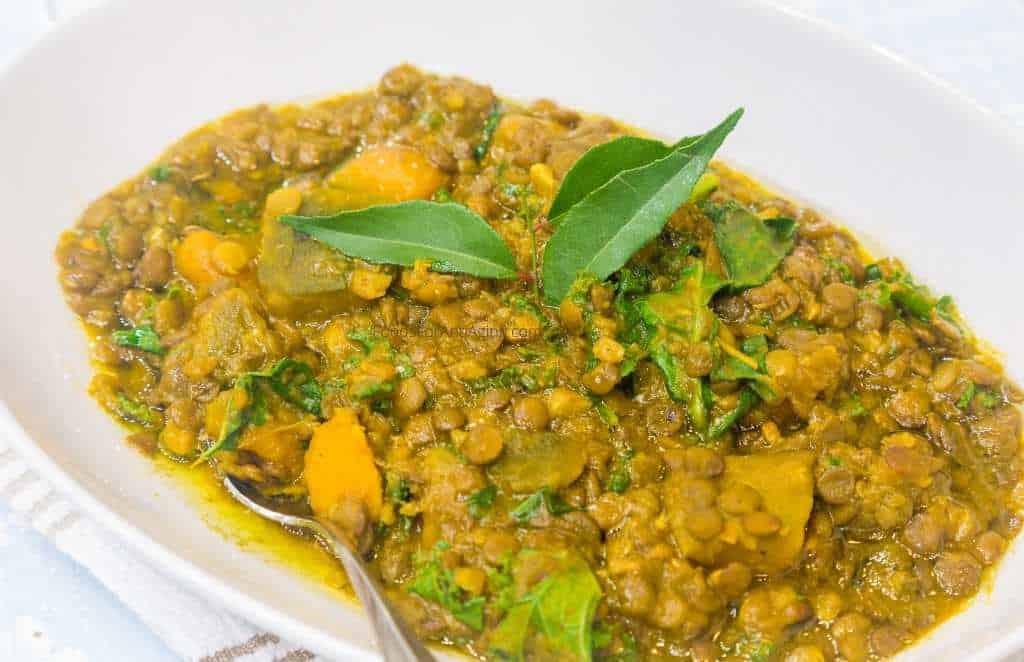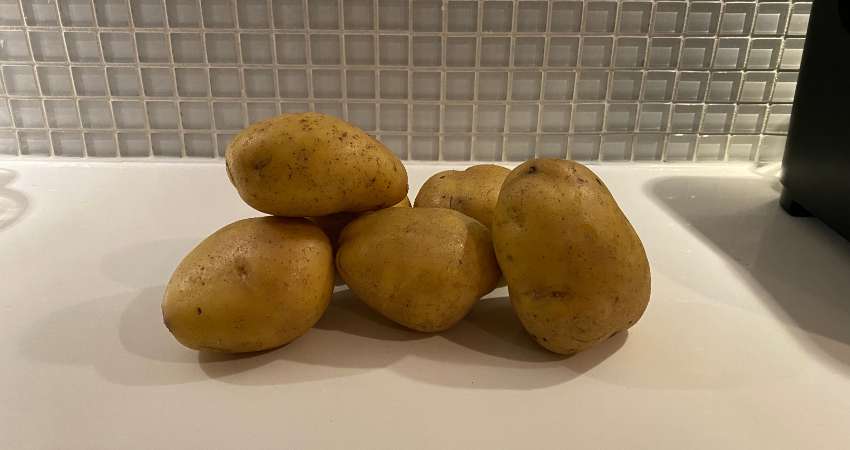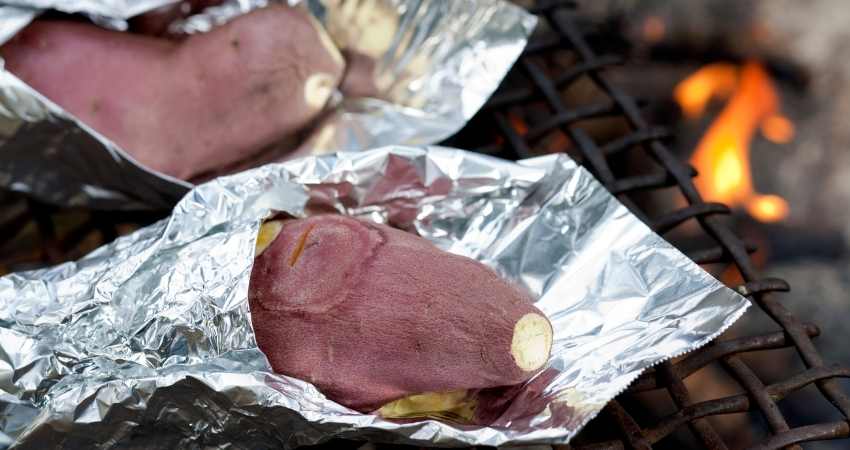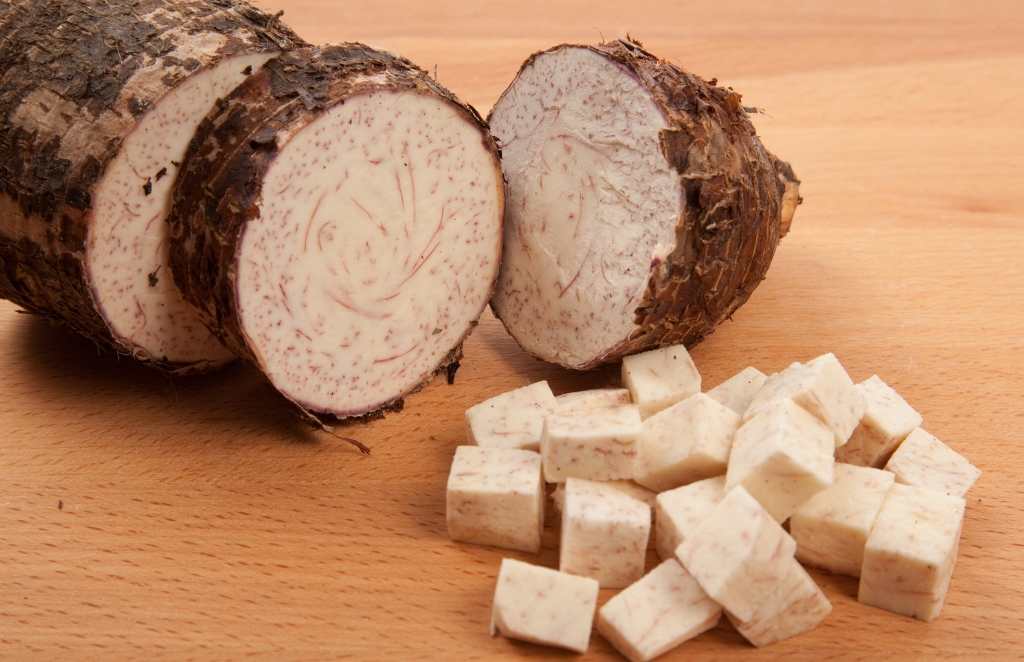Alternatives To Sweet Potatoes: 16 Unbeatable Substitutes
Let’s examine what alternatives to sweet potatoes.
The following are the best alternatives to sweet potatoes:
- Garnet Potatoes
- Pumpkin
- Butternut Squash
- Acorn Squash
- White Potatoes
- Jewel Potatoes
- Japanese Sweet Potatoes
- Ube
- Kabocha
- Yukon Gold Potatoes
- Golden Beets
- Parsnips
- Yuka
- Yams
- Taro
- Plantains
This article will list and explain each alternative, including how they’re similar and different than sweet potatoes. In addition, I prepared a table comparing the nutrients of each alternative to sweet potatoes and each other.
Alternatives To Sweet Potatoes

As a Certified Health Coach many clients ask me about food alternatives including sweet potatoes. Therefore, I have researched this topic in the past and present. Let’s examine the substitutes closely.
1. Garnet Potatoes/Finger Yams
Garnet potatoes are also called finger yams and garnet sweet potatoes. They are very similar to a normal sweet potato having white skin, however, they have a long, thin shape1.
Similarities:
- Texture
- Flavor profile
- Cooking time
- Shape and size
They are named after the precious stone garnet having a red color similar to the skin of garnet potatoes. The flesh of garnet potatoes is very similar to pumpkin and butternut squash. But, the texture of garnet potatoes are almost identical to sweet potatoes
They aren’t as sweet as a white sweet potato and have a unique earthy taste that regular sweet potatoes don’t have.
Major differences:
- Garnet potatoes aren’t as sweet.
- Garnet potatoes have orange colored flesh.
In most supermarkets and vegetable stands, garnet potatoes and sweet potatoes are sold right next to each other.
How Garnet potatoes are prepared
Garnet potatoes can be cooked the same way as sweet potatoes. They can be boiled, baked, roasted, frilled and made into fries or chips.
Major differences:
- Garnet potatoes aren’t as sweet.
- Texture isn’t as fibrous.
2. Pumpkin
Pumpkin is a large fruit that often gets called a vegetable2. It grows along the ground as a vine.
Similarities:
- Cooking time
- Texture
- Flavor profile
Cooked pumpkin has a very similar texture. Pumpkin has an herby, aromatic flavor, reminding you how healthy and nutritious they are. Many people would agree that pumpkin and sweet potato are as sweet as each other.
How Pumpkin is prepared
Pumpkin has about the same cooking time and can be cooked in exactly the same way. One limiting factor of using pumpkin is the skin is slightly bitter but in a delicious way.
In certain sweet recipes it won’t go well with the other flavors like in puddings and desserts. Therefore, you need to remove the skin before or after cooking the pumpkin. After cooking, the skin of a pumpkin is very soft and much easier to remove.
Major differences:
- The pumpkin skin has a noticeably more bitter taste.
- The pumpkin texture is slightly softer and more moist.
3. Butternut Squash
Butternut Squash is almost identical except the vegetable itself is a completely different shape3. Like pumpkin it makes a great substitute. They grow in a similar way to zucchini where they form at the base of the plant.
Similarities:
- Cooking time
- Texture
- Flavor profile
It has a very similar flavor to pumpkin, but is slightly sweeter. This makes butternut squash an even better substitute than pumpkin.
Although butternut squash are most abundant in winter as the last of the fall harvest, they keep very well. Typically, they’re available at the local supermarket or farmers market year round.
How Butternut squash is prepared
It can be prepared identically to sweet potatoes. For example, it can be baked in the oven and boiled. Once cooked the flesh turns soft. The seeds of a butternut squash need to be removed before or after cooking.
The flesh of an uncooked butternut squash is very firm and difficult to cut. Therefore, it’s generally easiest to cook it first before removing the skin. But, the seeds can be removed before cooking by cutting it in half and scooping them out.
Major differences:
- The texture is slightly softer and more moist.
4. Acorn Squash
Acorn squash makes a great substitute, but I would rate other vegetables like pumpkin and butternut squash over acorn squash because of the taste.
Similarities:
- Cooking time
- Texture
- Flavor profile
Acorn squash have a similar, sweet nutty taste, however, they aren’t as sweet. In addition, they have a blander taste than butternut squash and pumpkin.
Although the texture of acorn squash is more similar to sweet potatoes than butternut squash and pumpkin. It has a more fibrous and dry texture3. Whereas, pumpkin and butternut squash are generally more moist and soft than a sweet potato.
How Acorn squash is prepared
Acorn squash is prepared in exactly the same way as sweet potatoes. The one difference is it has seeds in the center of the vegetable which are removed before or after cooking.
Major differences:
- Acorn squash has a high seed to flesh ratio.
Acorn squash have a large number of seeds in the center of the vegetable, and far less flesh than a pumpkin or butternut squash. Therefore, you’ll spend more time preparing it compared to the other substitutes.
5. White Potatoes
White potatoes, though not as sweet, have a nearly identical texture. White potatoes as well as other types of potatoes are in the same family as sweet potatoes4. They grow underground in virtually the same way.
Similarities:
- Texture
- Flavor profile, although white potatoes aren’t sweet.
- Cooking time
Potatoes are resilient to frost whereas most sweet potato varieties die to frost. Therefore, the growing seasons are a little bit different. White potatoes can be planted in winter, whereas sweet potatoes should be planted after the last frost.
How white potatoes are prepared
White potatoes are cooked the same way you would cook sweet potatoes. They can be baked, boiled, fried or shredded.
Major differences:
- Potatoes aren’t as sweet.
- Potatoes are more bland and not as flavorful.
6. Jewel Potatoes
Jewel potatoes have yellower flesh than white potatoes and tend to be more light and fluffy rather than waxy. This gives them a more similar texture to sweet potatoes than white potatoes.
Similarities:
- Texture
- Flavor profile, although not sweet.
- Cooking time
Jewel potatoes grow in the same way as sweet potatoes5. They share the same earthy, nutty taste.
Jewel potatoes have a more earthy taste than white potatoes, and many say are better overall than white potatoes as a substitute. However, both work very well.
How Jewel potatoes are prepared
Jewel potatoes can be cooked the same way as sweet potatoes. Since they aren’t sweet like butternut squash, jewel potatoes should be a second choice for dessert recipes that call for sweet potatoes.
Major differences:
- Jewel potatoes aren’t sweet.
- Texture isn’t as fibrous.
7. Japanese Sweet Potatoes
Japanese sweet potatoes are sweeter than sweet potatoes and have a softer flesh. Overall, they have a similar taste and texture making them a great substitute6. Their skin is semi-rough and is garnet colored with a purplish undertone.
Similarities:
- Taste
- Texture
- Cooking time
Japanese sweet potatoes have a creamy white flesh which turns yellow after cooking. Their shape is typically round with narrowed ends and come in small and medium sizes.
How Japanese sweet potatoes are prepared
Japanese sweet potatoes can be prepared the same as sweet potatoes. They’re versatile and can be baked, boiled, steamed, roasted or fried.
Major differences:
- Japanese sweet potatoes are sweeter.
- Japanese sweet potatoes are better for desserts.
8. Ube
Ube taste nutty, earthy and mildly sweet making them similar to sweet potatoes. Their colors range from purple to bright lavender but can be creamy to plain white7. In addition, they share a similar nutritional profile.
Similarities:
- Both are sweet
- Similar earthy, nutty taste.
- Nutritional value
Ube is very similar to red yams and often gets mistaken for them because they both look like a root and are narrow. The flesh is a light purple and becomes darker when it is cooked.
How Ube is prepared
Ube has been used in deserts in the Filipino culture for years. They are often baked in muffins, cakes, cookies and ice cream. They can be pureed and added to pancake or waffle batters. Ube can be roasted, boiled and mashed.
Major differences:
- Subtle difference in texture.
- Dryer.
9. Kabocha

Kabocha, also known as Japanese Pumpkin, is a hard squash8. It is a slightly bumpy skin and is green with lighter green or white stripes. It tastes like sweet potato mixed with pumpkin and has a sweet flavor, although not as sweet.
Similarities:
- Sweet flavor
- Cooking time
Kabocha has a dark yellow flesh and its texture is fluffy similar to chestnut.
How Kabocha is prepared
Kabocha can be prepared the same way as sweet potatoes. They can be baked, steamed, roasted or stewed. Typically, they are not used for pies because they’re not sweet enough. They can be cut into strips, fries or used in casseroles.
Major differences:
- Not as sweet
- Color of the skin
- Fluffier texture
Kabocha was one of 13 low carb potato substitutes in my article. Check out the other 12 here, Low Carb Potato Substitutes: The 13 Best Alternatives.
10. Yukon Gold Potatoes

Anything sweet potatoes can be used for so can Yukon Gold potatoes. They are both root vegetables but from different families. Yukon Gold has a golden skin with a bright yellow flesh. Yukon Gold is similar in nutrients like fiber, carbs, vitamin C and B6.
Similarities:
- Cooking time
- Flavoring but not as sweet.
- Moist flesh
How Yukon Gold potatoes are prepared
They can be cooked any way. Many people combine them in the same recipe for color variation. Yukon gold can be boiled, baked, fried, grilling or roasting.
Major differences:
- Skin color
- Flesh color
11. Golden Beets
Golden beets are a variety of beets lacking the red color. They are golden in color and sweeter than red beets making them a good substitute.
Similarities:
- Cooking time
- Texture
- Sweet
How Golden Beets are prepared
Golden beets can be boiled, steamed or baked. Steaming or baking is more recommended to preserve more of its nutrients. The skin is difficult to peel when raw. Therefore, it can be cooked with the skin and peeled after making it much easier.
Major differences:
- Different color flesh.
- Less vitamins but more minerals.
Find out 15 healthy mashed potato substitutes in my article, Mashed Potato Substitutes: 15 Healthy Alternatives.
12. Parsnips
Parsnip is also a root vegetable9 but has a cream colored skin and flesh. They make a better substitute in January because their flavor gets sweeter in the colder months.
Similarities:
- Taste sweet
- Similar texture
How parsnips are prepared
Many people mash parsnips as a sweet potato substitute. The process is the same by boiling them and mashing them up with a butter substitute. They can be roasted on a baking sheet in the oven. Some people shred them or make them into thin fries.
Major differences:
- Parsnips has more sugar and less nutrients.
- Parsnips are longer and less round towards the bottom.
13. Yuka
Yuka, also known as Cassava, is a root vegetable. This vegetable has to be cooked, even though it makes sense as a substitute, because raw it can be poisonous.
Similarities:
- Similar nutrients.
- Nutty flavor.
- Cooking time.
How Yuka is prepared
Yuka makes a good substitute10 in many side dishes. Any way you would prepare sweet potatoes, the same can be done with Yuka. It can be boiled, used in soups or made into chips or fries.
Major differences:
- Yuka’s texture is stringy.
- Not as sweet.
Are you using potato flakes? Find out the best alternatives in my article, Potato Flakes Substitutes: The 17 Best Alternatives.
14. Yams

Yams and sweet potatoes often get confused11. A true Yam has a dark, bark-like skin with hairs. Its flesh is a light color, dry and starchy. They are more like Yuka and most yams come from West Africa12.
Similarities:
- Similar nutrients but yams have less sugar.
- Nutty flavor.
- Cooking time.
How Yams are prepared
Since the flesh is dryer, it’s really good for soups or stews. In addition, they can be boiled, fried, roasted or baked.
Major differences:
- Texture is stringier.
- Harder to find in typical U.S. supermarkets. You can find them in specialty grocery stores.
- Less sweet.
Some substitutes are different for Yukon Gold potatoes. Find out how in my article, Yukon Gold Potatoes Substitute: The 13 Best Alternatives.
15. Taro

Also known as Eddoes, Taro is a starchy root vegetable with a creamy white or purple flesh13. The outside is brown, rough and oblong.
Similarities:
- Sweet taste.
- Cooking time.
- Nutty flavor.
How Taro is prepared
Taro can be substituted in any dish. They can be boiled, fried, roasted or baked. In addition, they can be added to bread and puddings. In Hawaii, taro is used to make poi by pounding roasted taro until it becomes pudding like.
Major differences:
- Taro has a pasty consistency.
Taro didn’t make my ground beef alternatives list. Check out which 12 foods did in my article, Ground Beef Alternatives: 12 Healthy Substitutes.
16. Plantains
Plantains are also known as the cooking banana. They look like bananas and can be easily mistaken for them. They are technically a fruit but are cooked and eaten like a vegetable.
Similarities:
- The sweetness of the plantain can be matched to a sweet potato.
- Can be cooked the same, even in its skin.
How plantains are prepared
Plantains are always ready to be cooked no matter what color or stage of ripeness. They can be used from appetizers to desserts. They can be boiled, baked, steamed, grilled or fried.
To match the same sweetness of a sweet potato, use medium ripe plantains yellow or yellow with some black. Almost black, they are more sweet. Green plantains are not a good substitute unless you’re looking for a bland and starchy taste.
Many low carb substitutes for sweet potatoes are different due to flavor. Check those out in my article, Keto Substitute for Sweet Potatoes: 8 Healthy Substitutes.
Nutritional Value Of Sweet Potato Alternatives
The following are the nutritional values of sweet potato alternatives:
| 1 Cup (Raw) | Calories | Fat | Carbs | Protein | Sugar | Fiber |
| Sweet Potatoes | 114 | 0.1 g | 27 g | 2.1 g | 5.6 g | 4.0 g |
| Garnet Potatoes | 150 | 0 g | 38.1 g | 2.3 g | 8.1 g | 4.6 g |
| Pumpkin | 39 | 0.2 g | 9.8 g | 1.5 g | 4.1 g | 0.8 g |
| Butternut Squash | 68 | 0.2 g | 18 g | 1.5 g | 3.3 g | 3.0 g |
| Acorn Squash | 60 | 0.2 g | 16 g | 1.2 g | 3.1 g | 2.2 g |
| White Potatoes | 104 | 0.2 g | 24 g | 2.5 g | 1.7 g | 3.6 g |
| Jewel Potatoes | 115 | 0 g | 26 g | 2.3 g | 8.1 g | 4.6 g |
| Japanese Sweet Potatoes | 112 | 0.1 g | 26 g | 2.0 g | 5.4 g | 3.9 g |
| Ube | 119 | 0.1 g | 29 g | 2.5 g | 0.6 g | 4.0 g |
| Kabocha | 53 | 0 g | 12 g | 1.8 g | 5.3 g | 1.8 g |
| Yukon Gold Potatoes | 128 | 0.2 g | 29 g | 3.5 g | 1.6 g | 3.0 g |
| Golden Beets | 54 | 0 g | 21 g | 5.4 g | 5.4 g | 5.4 g |
| Parsnips | 113 | 0.5 g | 27 g | 1.8 g | 7.2 g | 7.3 g |
| Yuka | 240 | 0.4 g | 57 g | 2.0 g | 2.6 g | 2.7 g |
| Yams | 177 | 0.3 g | 42 g | 2.3 g | 0.8 g | 6.2 g |
| Taro | 168 | 0.3 g | 40 g | 2.3 g | 0.6 g | 6.2 g |
| Plantains | 183 | 0.5 g | 48 g | 2.0 g | 26 g | 2.5 g |
The table above shows the calories, fat, carbohydrates, protein, sugar and fiber of all the substitutes in this article14. When choosing a substitute, check the table for particular nutrients which may be important to you15. Bookmark this article for future reference.
If sugar content is important, the following substitutes contain the most:
- Plantains
- Parsnips
- Jewel potatoes
- Garnet Potatoes
If limiting carbohydrates is a concern, the substitutes with the most are:
- Plantains
- Taro
- Yams
- Yuka
If you want to keep a close check on calories, the following substitutes contain the most:
- Plantains
- Taro
- Yams
- Yuka
- Garnet potatoes
How To Choose A Sweet Potato Alternative
- Before choosing a substitute, determine what dish you’ll be cooking and the taste, texture and sweetness required.
- If nutritional requirements matter, choose a substitute with similar nutrients. Check the table above.
- If you don’t have time to plan, pick a substitute from the list above you already have in the house.
- If you’re on a special diet, always check with your physician or nutritionist prior to choosing a substitute.
- Choose items in season for the best quality and taste16.
Find out the best russet potato substitutes in my article, Russet Potatoes Substitute: 13 Healthy Alternatives.
If you have any questions to ask me about this article don’t hesitate to comment below or email us. You can find an email on our contact page.
Read Next – More Food Alternatives Articles!
Is It Permissible To Substitute Fruit For Vegetables?
Should A Salad Be Served in a Bowl or a Plate?
Can I Replace Olive Oil With Coconut Oil
These Are The Best Mango Types For Pickling And More
The Best Balsamic Vinegar Substitute
5 Best Alternatives for Spinach When Cooking
- SFGATE: How Do You Know When A Red Yam Is Ripe? [↩]
- University of Illinois Extension: Pumpkins and More [↩]
- University of Illinois Extension: Winter Squash [↩] [↩]
- UCI Health: Tasty sweet potato casserole [↩]
- University of Illinois Extension: Sweet Potato [↩]
- National Center for Biotechnology Information: Recent progress in sweet potato breeding and cultivars for diverse applications in Japan [↩]
- Wikipedia: Ube halaya [↩]
- Wikipedia: Kabocha [↩]
- National Center for Biotechnology Information: White Vegetables: A Forgotten Source of Nutrients: Purdue Roundtable Executive Summary [↩]
- NC State: Jose “Pepe” Calderon Markets Sweet Potatoes Internationally [↩]
- University Bariatrics: Roasted Sweet Potatoes [↩]
- Library of Congress: What is the difference between sweet potatoes and yams? [↩]
- Wikipedia: Taro [↩]
- NutritionValue: Sweet Potatoes, raw [↩]
- USDA: Nutrition [↩]
- University of California: Posts Tagged: sweet potato [↩]
